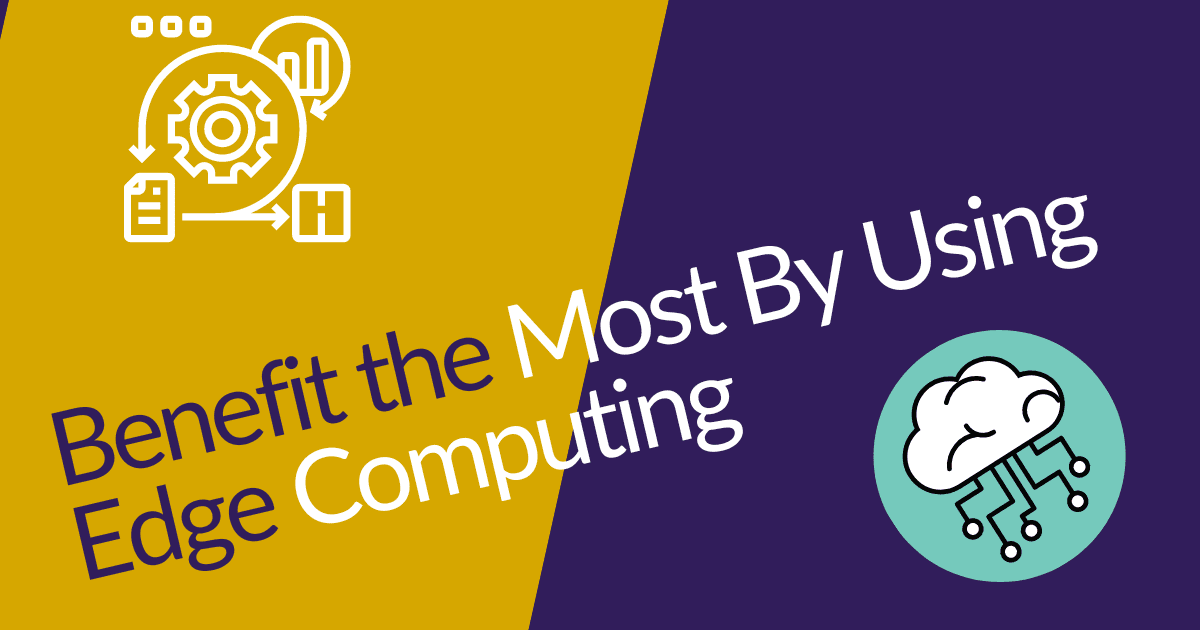Introduction
Edge computing has emerged as a powerful computing paradigm that brings data processing and analysis closer to the data source or end devices.
While edge computing offers several advantages, its effectiveness varies depending on the situation and application.
Choosing the right situations for edge computing is crucial to maximize its benefits and address specific requirements.
This article explores various scenarios where edge computing can be particularly advantageous and impactful.
Understanding Edge Computing
Edge computing involves deploying computing resources at the network edge, closer to the data source, for real-time data processing, analysis, and decision-making.
By reducing latency and dependency on centralized cloud infrastructure, edge computing enables faster response times, enhanced security, and improved efficiency.
It empowers localized data processing, enabling critical applications that require real-time insights and decision-making capabilities.
Identifying Situations for Edge Computing
When determining the suitability of edge computing for a particular situation, several factors come into play.
These include the latency sensitivity of the application, the impact of network connectivity and bandwidth limitations, and the need for localized decision-making.
Let’s explore some situations that benefit the most from edge computing:
Internet of Things (IoT) Applications
IoT applications generate massive amounts of data from connected devices.
Edge computing is particularly beneficial for IoT applications due to its ability to process and analyze data at the edge in real time.
Time-sensitive IoT applications, such as industrial automation, smart homes, and asset tracking, require low latency and quick response times.
Edge computing enables localized decision-making and automation, minimizing the need to rely solely on cloud infrastructure and network connectivity.
Autonomous Vehicles and Transportation
Autonomous vehicles and transportation systems rely on real-time data processing and analysis for safe and efficient operation.
Edge computing plays a vital role in this domain by processing sensor data at the edge, enabling quick decision-making and response.
By reducing reliance on cloud infrastructure and network connectivity, edge computing ensures that autonomous vehicles can make split-second decisions, even in environments with limited connectivity.
Manufacturing and Industrial Automation
In manufacturing and industrial automation, edge computing offers significant advantages.
By processing data locally at the edge, it enables real-time monitoring and control of machinery and processes.
This localized approach enhances operational efficiency, reduces downtime, and improves overall productivity.
Edge computing minimizes the reliance on cloud infrastructure for critical processes, ensuring that manufacturing operations can continue uninterrupted, even in the absence of a stable network connection.
Healthcare and Telemedicine
Healthcare and telemedicine applications often require real-time data processing and analysis to deliver timely and accurate medical services.
Edge computing facilitates remote patient monitoring, diagnostics, and personalized healthcare solutions by processing data at the edge.
This ensures faster response times, privacy, and security for sensitive medical data.
By reducing dependency on cloud infrastructure, edge computing enables reliable healthcare services, even in remote areas with limited network connectivity.
Smart Cities and Infrastructure
Edge computing plays a vital role in the development of smart cities and infrastructure.
By enabling efficient traffic management, urban infrastructure systems, and public safety services, edge computing optimizes resource utilization and enhances the overall quality of life for citizens.
Real-time monitoring and response capabilities at the edge enable quick decision-making and action, reducing latency and network congestion in smart city applications.
Conclusion
Edge computing offers tremendous potential to transform various industries and applications.
The situations that benefit the most from edge computing are those that require low latency, real-time decision-making, and reduced reliance on cloud infrastructure.
Industries such as IoT, autonomous vehicles, manufacturing, healthcare, and smart cities can leverage the power of edge computing to enhance efficiency, improve safety, and deliver timely services.
FAQs
1. Can edge computing be used for applications that don’t require real-time processing?
Yes, edge computing can be beneficial even for applications that don’t require real-time processing.
It offers advantages such as improved security, reduced network congestion, and localized data processing, which can benefit a wide range of applications.
2. Are there any situations where cloud computing is more suitable than edge computing?
Yes, certain situations that involve massive data processing, long-term storage, and complex analytics are better suited for cloud computing.
Edge computing and cloud computing can be used together to create hybrid solutions that leverage the strengths of both approaches.
3. How does edge computing address network connectivity limitations?
Edge computing minimizes reliance on network connectivity by processing data locally at the edge.
It allows applications to continue functioning even in scenarios where network connectivity is limited or temporarily unavailable.
4. What are the security considerations when implementing edge computing?
Implementing edge computing requires robust security measures to protect data at the edge.
Encryption, authentication, access controls, and regular security updates are crucial to ensure the integrity and privacy of data.
5. Can edge computing benefit small-scale businesses and organizations?
Yes, edge computing can benefit businesses of all sizes.
Its advantages, such as localized data processing, improved efficiency, and reduced dependency on cloud infrastructure, make it accessible and valuable for small-scale businesses and organizations.
